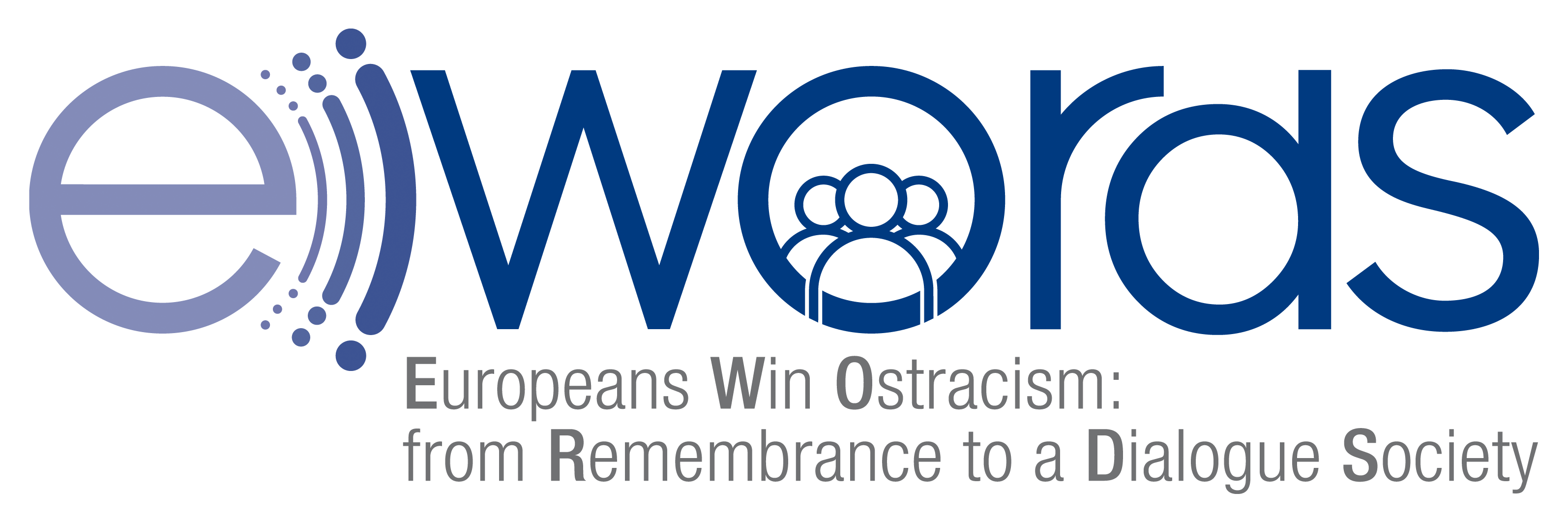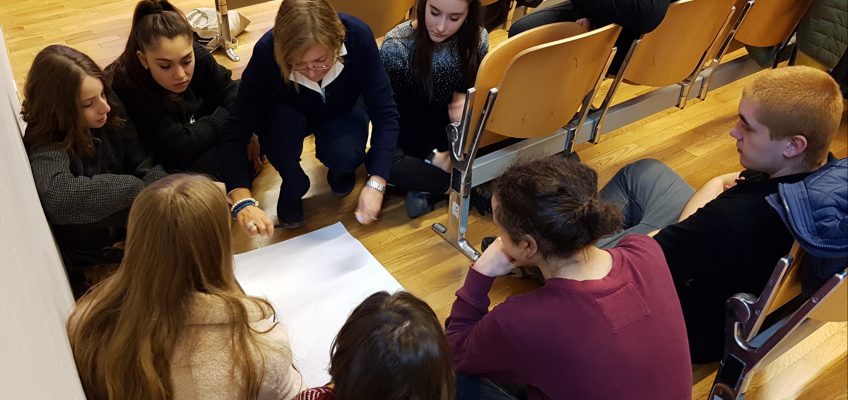Human Rights
Human rights are rights inherent to all human beings, regardless of their nationality, origins, colour of the skin, gender, sexual orientation, age, language, religion, or any other status (principle of non-discrimination). Therefore, human rights are universal.1
They are inalienable, which means that they should not be taken away (except in specific circumstances as a result of a due process).
Likewise, they are indivisible and interdependent, because one cannot fully enjoy a right without enjoying the others.
Historically, human rights have been denied and violated, as it happened in Europe at the time of the totalitarian regimes, and unfortunately still today people all over the world suffer different kinds of human rights violations.
Human rights are protected by international human rights law, both at the United Nation and regional levels.
The first document setting out fundamental human rights to be universally protected is the Universal Declaration of Human Rights, adopted by the UN General Assembly in Paris on 10 December 1948.
This text was born in the aftermath of the Second World War as a response to the barbarous acts that had been perpetrated with the aim not to have them again. And it is not by chance that in the same year the Convention on Genocide was also adopted by the UN General Assembly.
The Declaration starts as follows:
“All human beings are born free and equal in dignity and rights” (art. 1, UHDR).
Freedom and equality of every human being are thus affirmed. With the end of the war and the Jews’ genocide brought to the public opinion’s attention, the need of protecting individuals as such and putting human dignity at the centre emerged. Significantly, the opening words of the UDHR state the principle of non-discrimination, by referring to “all human beings”.
In the first part of the Declaration (artt. 1-21), “first generation” or civil and political rights are listed: right to equality, freedom from discrimination, right to life, liberty and personal security, freedom from slavery, freedom from torture and cruel, inhuman and degrading treatment or punishment, right to equal protection of the law, freedom from arbitrary arrest, detention or exile, right to a fair and public hearing, freedom from arbitrary interference with privacy, freedom of movement, right to seek and enjoy asylum, right to a nationality, right to marry and to found and family, right to property, freedom of thought, conscience and religion, freedom of opinion and expression, freedom of peaceful assembly and association, right to take part in government.
The following part (artt. 22-27) of the Declaration sets forth “second generation” or economic and social rights: right to social security, right to work, right to rest and leisure, right to food, clothing, housing, medical care and social services, right to education, right to participate in cultural life of the community.
Significantly, the structure of the Declaration reflects the difficulties of mediating between different ideological visions and finding a common understanding of rights and freedoms. In fact, the text was drafted by representatives coming from all over the world and with different legal and cultural backgrounds. In particular, the western political and economic system (mainly represented by USA, Great Britain and France) and the socialist one (primarily represented by USSR) were opposed to each other.
When it comes to the UDHR, it is important to bear in mind that it sets out a common standard of achievements for all peoples and nations, but being a declaration, it is not legally binding on states. Nevertheless, some of these norms are now considered as customary law, as well as almost all of them have then been incorporated in many international and regional human rights treaties providing states’ obligation to respect, protect and fulfil human rights.
Many documents and treaties have been produced at the international level, by the United Nations system, as well as at the regional level, by the Council of Europe, the Organisation of American States, the African Union and the League of Arab States.
At the UN level we have the two International Covenants on Civil and Political Rights and on Economic, Social and Cultural Rights (1966)2 and several specific treaties including: the already mentioned Genocide Convention (1948), the Refugee Convention (1951), the Convention on the Elimination of All Forms of Racial Discrimination (1965), the Apartheid Convention (1973), the Convention on the Elimination of All Forms of Discrimination against Women (1979), the Convention against Torture (1984), the Convention on the Right of the Child (1989), the Convention on Migrant’s Rights (1990), the Convention against Transnational Organized Crime (2000), the Convention against Human Trafficking (2000), the Convention on the Rights of Persons with Disabilities (2006), the Convention against Enforced Disappearance (2006).
At the regional level, we can mention: the European Convention on Human Rights and Fundamental Freedoms (1950) and the European Social Charter (1961), the EU Charter on Fundamental Rights (), the American Convention on Human Rights (1969), the African Charter on Human and Peoples’ Rights (1981), the Arab Charter on Human Rights (2004).
Treaties on specific issues, such as nationality, human trafficking, torture, forced disappearance, discrimination against persons with disabilities, women’s rights and violence against women, rights and welfare of the child, have also been produced by these regional organisations.
Although there are many treaties establishing legal obligations among state members to implement those rights within their national systems, with some of these having been ratified by more than three-quarters of the world’s countries, there are still many issues concerning the enforcement of these norms.
First of all, a state is bound by a treaty only once it has ratified it and this can take years sometimes. Secondly, there are states that have signed but still not ratified some treaties, for example USA have not ratified neither CEDAW nor the Convention on the Right of the Child yet.
Moreover, a state can be party to a treaty, at the same time adopting reservations in relation to specific provisions, with the result of excluding their legal effects on that state, provided that the reservations are not incompatible with the object and purpose of the convention. The issue is that many reservations to human rights treaties have been made by states, by claiming the inconsistency of national law, culture, tradition or religion with the treaty, and, crucially, some reservations are so wide in their scope that their effect cannot be limited to specific articles of the convention.
When it comes to the system that has to to promote states’ compliance with the treaties, every UN treaty has its own committee, its treaty body consisting of independent experts, with a dual function: that of interpreting the treaty, through “general comments” (“general recommendations” for the CEDAW), helping to understand the treaty’s norms, and that of monitoring state members’ compliance, through different mechanisms (complaints, periodic reports submitted by state members, inquiries) that, however, always result in a recommendation to the state member. Treaty bodies issue in fact the so-called “concluding observations”, which are not legally binding decisions and often receive very little attention.
At the UN level there is therefore a clear unbalance: on one side, there are many norms protecting human rights, but on the other side, there is a lack in the monitoring system.
Differently, within the European regional system the European Court of Human Rights has been established by the European Convention on Human Rights, allowing citizens from participating countries who could not find remedy in the national courts to petition. However, it is not hard to understand that the court has a very large backlog of cases.
In conclusion, international human rights law provides standards to protect human rights and fundamental freedoms globally, but it is difficult to translate these rules into practice and the enforcement mechanism is definitely weak, with the result that 70 years after the proclamation of the Universal Declaration of Human Rights most of these rights are still not effective and their violation often represents the normality. A strong system of sanctions for states responsible for human rights abuses is needed, together with supranational judicial bodies applying them in order to ensure human rights’ effectiveness.
When it comes to the fight for human rights, there is also the work done by civil society and in particular by thousands of NGOs working on human rights issues (among the most notable: Human Rights Watch, Amnesty International, Doctors Without Borders), from advocacy with governments and international organisations, as well as gathering information about human rights abuses and designing awareness-raising campaigns for the international community, to educating people about their human rights and fundamental freedoms.
Discrimination occurs when in analogous situations individuals receive an unequal treatment because of their ethnicity, origin, gender, sexual orientation, language, culture, religion, political opinion, disability, age and on many other grounds.
“All human beings are born free and equal in dignity and rights” (art. 1, UDHR).
“Everyone is entitled to all the rights and freedoms set forth in this Declaration, without distinction of any kind, such as race, colour, sex, language, religion, political or other opinion, national or social origin, property, birth or other status” (art. 2, UDHR).
The non-discrimination principle is present in the Universal Declaration of Human Rights (UDHR), proclaimed by the United Nations General Assembly in Paris on 10 December 1948, and in all the major human rights treaties. It is also central to some UN Conventions, such as the Convention on the Elimination of All Forms of Racial Discrimination (1965) and the Convention on the Elimination of All Forms of Discrimination against Women (1979).
There are direct and indirect discriminations: the first one, easier to be recognised, takes place when a person or a group is intentionally discriminated (for example if migrant job applicants are rejected by an employment office), whereas the second one is more difficult to prove and occurs when an apparently neutral provision or practice negatively affects certain categories (for example the minimum height criterion for police officers that may exclude more women than men).
Discrimination is a serious violation of human rights and it undermines the enjoyment of other rights for the individual who is subjected to it, for example: the rights to health, education, to work, to marry and to found a family, the freedoms of expression, belief and in the most tragic cases even the right to life.
One should bear in mind that discrimination has both direct and indirect consequences: direct consequences on people who are discriminated against and indirect consequences on the society as a whole, because when people are discriminated they cannot express their full potential and therefore be fully active citizens.
Discrimination is strictly linked to intolerance, which means that certain categories are perceived as “the other”, as “something different”, for example because of their ethnic origins, religion or sexual orientation, and therefore are not respected.
Intolerance can even lead to hate and it manifests itself through different forms of violence, that range from psychological violence to being murdered.
Historically, people have always suffered discrimination and intolerance. The holocaust of Jews is a tragic history of discrimination and intolerance. The aim of racist Nazi ideology was the extermination of Jews and other “inferior people”.
Crucially, this is not something that only belongs to the past and millions of people are discriminated against every day all over the world, also when it comes to Europe and democratic countries.
We are witnessing an increase of intolerance, hate crimes and manifestations of discrimination and violence in contemporary European societies.
Just think of the treatment of migrants and refugees or discrimination against certain minority groups like Roma people, as well as against homosexuals and disabled people. Significantly, these are the very same categories that were victims of past European totalitarian regimes.
Stigmatisation and ostracism are largely present in nowadays’ societies which are pervaded by the feelings of fear and hate, with the consequence of undermining a balanced and sustainable development.
Sexism, homophobia, xenophobia, Romaphobia, Islamophobia, are significant examples of pervasive discrimination and therefore serious challenges to human rights protection and to an inclusive growth of the society.
Women, LGBT people, members of ethnic and religious minorities should be able to enjoy human rights without discrimination.
As a matter of fact, discrimination and intolerance are often the result of stereotypes, prejudices and lack of knowledge. Therefore, education and awareness-raising campaigns are key when it comes to design actions aimed at preventing and combating discrimination and intolerance and their consequences. Only in this way we can fight our daily struggle against discrimination, by changing current attitudes towards “diversity” in European societies, considering it as something positive and not negative, with a view to preventing ostracism and promoting social inclusion.
1 We mention here the so-called “universalism-relativism” debate. If on one side, universalists argue that human rights are universal, on the other side cultural relativists object that it is not possible to talk about universal human rights, valid for everyone in every context, considering human rights as culturally dependent. According to relativists the so-called universal human rights are the result of the imposition of a particular type of human being, the western one, on the others, therefore looking at human rights universalism as an instrument of neo-colonialism and cultural imperialism.
2 The reason for two covenants instead of one is again the ideological opposition between western and socialist delegations.
A selection of events:
Totalitarian Regimes and Human Rights
Film Screening in Maastricht: The Wave
Celebrating the 70th Anniversary of the UN Declaration on HR









